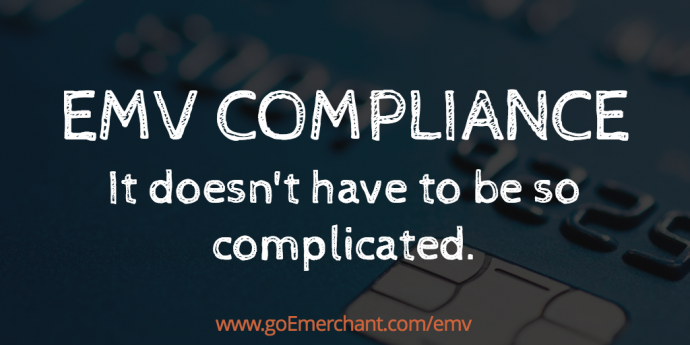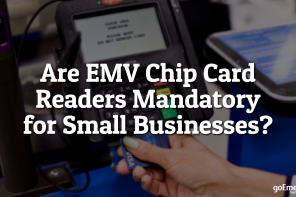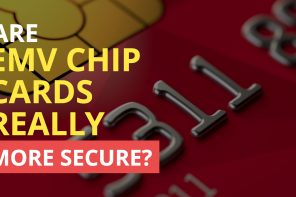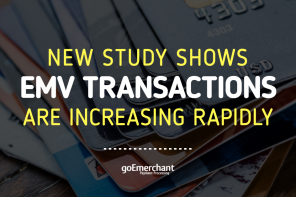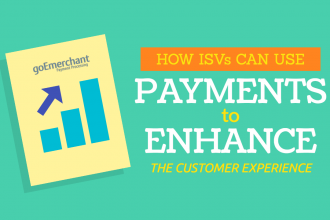We get it. The EMV liability shift hasn’t been the smoothest transition since it began in October 2015. But as EMV terminals become the standard for merchants of all sizes and industries, businesses everywhere are reaping the benefits.
And there are plenty.
To start, according to Visa, merchants using chip-enabled cards have seen a 52 percent decrease in fraud. And that’s just the tip of the iceberg. As more and more retailers integrate EMV chip terminals, we will continue to see a decrease in brick-and-mortar fraud.
There’s no definite number of how many merchants are EMV-compliant, but industry-wide data suggests that just over half (57 percent) of U.S. merchants are EMV-equipped to accept chip and pin cards. With rising fraud rates penetrating the commerce ecosystem, now is the time for merchants to upgrade their terminals. The gap between merchants who are EMV-equipped and those aren’t is where the issue truly remains.
Data from the U.S. Payments Forum indicates that now over 45% of U.S. credit and debit transactions are made with EMV chip cards, which will only increase as more merchants upgrade their terminals. The urgency, of course, comes as rising fraud rates plague the payment card ecosystem. According to a Nilson report, plastic card fraud is expected to grow to $31.67 billion in 2020. That’s a 42 percent increase in just a few short years.
Why EMV Matters: Upgrade Now or Risk Paying More Later
Whether you like it or not, the EMV liability shift is well into effect. This has left merchants responsible for upgrading their credit card processing equipment to accept chip cards. EMV is a fraud-reducing chip technology that helps to protect businesses and consumers against losses from the use of counterfeit, lost and stolen credit and debit cards at the point-of-sale.
But the transition to EMV doesn’t have to be so complicated. As the global standard for credit and debit card payments, EMV creates a one-time use code (tokenization) for each transaction. The added protection comes with the tiny chip embedded in the card, encrypting every transaction. This provides an increased ability to securely transact, authenticate the card and the cardholder — all of which are directly correlated to fraud.
The biggest draw for merchants needing to become EMV compliant? Merchants who have not upgraded could be responsible for fraudulent charges. Not only is it in your best interests to eliminate liability, but it is also in your best interest to protect your customer’s’ cardholder data and avoid potentially being part of a massive credit card breach. Breaches can cripple your business’ bottom line, increase customer churn and even cause a slew of regulatory issues with your credit card issuers and processors.
Easier EMV Integration: Eliminate the Headache
With the right payment processing partner, EMV integration doesn’t have to be complicated. The benefits of EMV credit card processing terminals are vast, and ensure your business is better protected from outside threats. They also help to future-proof your payment terminals by enabling the acceptance of modern payment methods, like mobile and contactless payments.
Beyond the liability requirements, EMV credit card processing terminals provide:
- Better security and EMV features: Secures data and application managements for highly-secured electronic transactions. Provides end-to-end encryption (E2EE) solutions for reduced PCI DSS scope and reduces counterfeit card fraud.
- More payment options: In addition to accepting EMV, magstripe and NFC/contactless payments, merchants can support new technologies such as NFC, loyalty features, couponing, wallets and QR codes. EMV-enabled checkout solutions can also increase revenue through acceptance of international cards and enable cardholders to use secure EMV payment cards globally.
- Faster, more secure checkouts: The right payments processing partner will provide you with a robust and optimized checkout terminal solution that is easy to handle, and provides convenient interactions with your customers. Transactions are fast, accurate and safe.
- Seamless Integration: With an easy digital connection, the right payment processing partner should provide a plug-and-play system that enables a single multipoint mono connector cable for seamless integration.
Despite some challenges during the start of the EMV-liability shift, there are so many great reasons why merchants should be EMV compliant. It not only protects you, your business and your customers from rapidly-rising card fraud at physical terminals, but it can also enhance your payment relationships with your card-issuing partners.
Remember, as we noted above: Upgrade now or risk paying more later! EMV terminal solutions are readily available in the marketplace, and by working with a partner like goEmerchant, we can take the pain out of EMV integration and help your business on its path to properly securing all profit. In the end, the choice is yours — but we’re here to make it easier.
